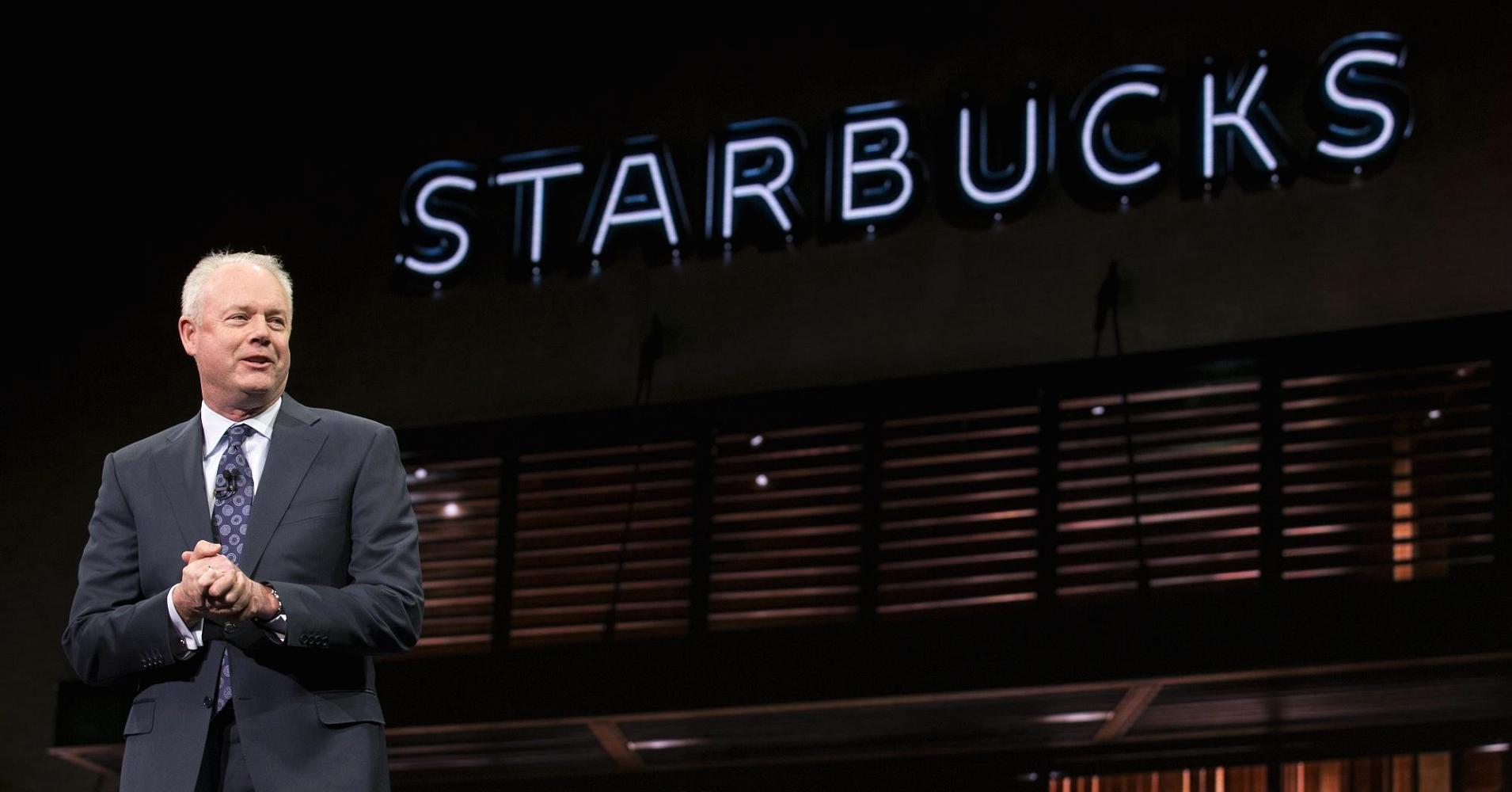
Stepping into the chief executive position in any company can be daunting. Even more so, when the role was once filled by a leader who earned his reputation by building a brand as big as Starbucks.
That’s what Kevin Johnson faced when he took over as CEO of the coffee giant last year.
Johnson’s ascension came as founder and ex-CEO Howard Schultz stepped down to focus his efforts on trying to turn Starbucks’ Reserve Roastery-branded coffee bars into destination restaurants.
“That’s no easy task following up Howard,” R.J. Hottovy, a Morningstar analyst, told CNBC. “It’s not an enviable position for any executive… but Kevin has a great working relationship with [him].”
Johnson is clearly still laboring in Schultz’s shadow. The December opening of the Shanghai Roastery once again propelled Schultz to the forefront of the brand, with analysts and investors alike praising the new business.
Not to mention, that Roastery is averaging $64,000 in sales each week and continuously attracts a line of people waiting to get inside.
At the annual shareholders’ meeting last week, Johnson took the lead, addressing investors about the company’s plans for menu and tech innovation, as well as pay equity. Attendees cheered Starbucks’ new parental leave plan, which allows adoptive parents to take time off, as well as its commitment to creating a greener to-go cup.
But nothing could compare to the thunderous applause and standing ovation that welcomed Schultz on stage nearly an hour and a half into the presentation.
Nearly a year after Johnson took over as CEO, investors and analysts are still trying to gauge the success of his leadership. Some have praised his tech-savvy innovation and the company’s growth in China, while others have lamented over the ongoing weak sales of food and beverages and merchandise in the U.S.
“I think Starbucks’ performance in the last year has been underwhelming,” Hottovy said. “[Same-store sales], in particular, have been flat to negative, and the company has admitted that they’ve made some mistakes on merchandising. It’s a disappointing start to his tenure.”
Starbucks has struggled with sales in the U.S. for several quarters. New beverage concoctions in its Frappucino line fell flat with consumers and shoppers largely ignored the in-store merchandise Starbucks tried them while waiting in line to order their non-fat lattes.
Earlier this week, the company said it was extending its Happy Hour Frappuccino deal to include some espresso beverages and iced teas. The announcement comes as the coffee giant’s latest limited-time Crystal Ball Frappucino failed to live up to the buzz that the bright pink Unicorn drink won last spring.
Under Johnson’s leadership, Starbucks has continued to invest in other types of beverages, ones that remain on tap all year long. This includes cold brew, Teavana iced teas and blonde espresso.
At the shareholders’ meeting, Starbucks leadership said that cold drinks were now 50 percent of the coffee giant’s business. Five years ago, they only accounted for 37 percent.
In addition, Starbucks saw growth of 40 percent for its refreshers, lightly caffeinated beverages made with fruit juice. It aims to expand that line during the summer.
The company will also roll out its nitro cold brew to 4,000 Starbucks locations by the end of 2018. It is currently available in 2,300 stores in 27 countries.
While beverage innovations have been hit-or-miss for the company, technology upgrades have been a high point.
Ahead of his appointment, Johnson was billed as a tech-savvy veteran of the coffee world. Before joining Starbucks, he worked closely with Steve Ballmer at Microsoft and served as the CEO of Juniper Networks.
He was well established within Starbucks before taking the helm, too, having joined the board of directors in 2009 and becoming president and chief operating officer in 2015. Johnson led the effort to integrate mobile pay apps at Starbucks.
Just ahead of Johnson’s promotion to CEO, Starbucks faced a major issue with its mobile app. So many mobile shoppers ordered and paid for their drinks before they arrived at the stores that the pick-up counters got overcrowded. Customers who didn’t order ahead saw the congestion and left without buying anything, even though lines at the register were short.
Since then, the company has worked hard to smooth out the traffic issues and even opened its mobile payment system up to customers who aren’t rewards members.
“The challenge with tech is that it takes a while for you to implement it and make the changes so that the customer can start to experience them and benefit from them,” said Chris O’Cull, a Stifel analyst.
Already, the Seattle headquarters is testing a new concept of running a tiny store, essentially just a galley kitchen and a pick-up counter, that would cater just to mobile orders. Plus, the company partnered with Alibaba to roll out some fancy augmented reality features at the Shanghai Roastery.
But, improving the actual guest experience and increasing digital engagement can take time, O’Cull said. It also takes patience, particularly from investors who want to see fast results.
“He’s doing the right thing,” O’Cull said. “But it’s going to take time.”

